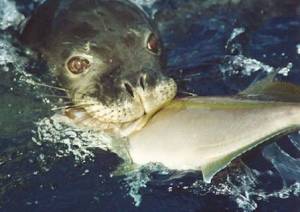Blog
News, updates, finds, stories, and tidbits from staff and community members at KAHEA. Got something to share? Email us at: kahea-alliance@hawaii.rr.com.
Caught: NWHI Fishing Violations
 Below is an excerpt from a press release sent out by the US Coast Guard today regarding possible illegal fishing in the Northwestern Hawaiian Islands over the weekend. They didn’t provide much by way of details whether it was a local or foreign vessel, commercial or recreational, or what was on-board. As the investigation progresses, however, we will try to post updates on this incident.
Below is an excerpt from a press release sent out by the US Coast Guard today regarding possible illegal fishing in the Northwestern Hawaiian Islands over the weekend. They didn’t provide much by way of details whether it was a local or foreign vessel, commercial or recreational, or what was on-board. As the investigation progresses, however, we will try to post updates on this incident.
“U.S. Coast Guardsmen aboard a buoy tender and a C-130 long-range aircraft from Honolulu documented the crew of a vessel believed to be illegally fishing in the protected waters of the Papahanaumokuakea Marine National Monument this past weekend.
A Coast Guard C-130 crew was launched late last week from Air Station Barbers Point on Oahu and located the 79-foot U.S.-flagged long-line fishing vessel believed to be fishing inside the monument Friday, Feb. 27, 2009. The aircraft documented the vessel suspected of having its long-line fishing gear in the water approximately three miles inside the monument and approximately 875 miles from Midway.
The Coast Guard cutter Kukui, an Oahu-based 225-foot buoy tender, was diverted to the fishing vessel’s last-known position in the monument and dispatched a law enforcement team via small boat to board the vessel in order to examine the logs and interview crew members.
The Coast Guard buoy tender’s boarding team gathered evidence that was forwarded to NOAA’s Fisheries Office of Law Enforcement. In the event of a violation, the owner and operator of the vessel may face potential civil penalties and/or permit sanctions.”
Another Mass Whale Stranding
Yep, February was “Humpback Whale Awareness Month” in the states, but March is looking like a not-so-hot one for other cetaceans…
Military sonar among suspected causes of mass whale stranding on the Tasmanian shore over the weekend.

Mark Simmonds, of the Whale and Dolphin Conservation Society and an expert on cetacean strandings, said that two species coming ashore together was enough to arouse suspicions of a human factor, including the use of sonar by the military.
Inviting in the New Invasive

We’ve been talking for a while about possible impacts of genetically modified organisms on conventional crops and/or wild plants and the implications of “escaped genes” on natural ecosystems.
From article in the New Scientist:
NOW it’s official: genes from genetically modified corn have escaped into wild varieties in rural Mexico. A new study resolves a long-running controversy over the spread of GM genes and suggests that detecting such escapes may be tougher than previously thought.
(Mahalo to Judy and Dave for the tip!)
So not only are these rogue, experimental genes escaping into native ecosystems, they’re also harder to detect than we had thought. Sounds like the makings of a perfect invasive to us!
Hawaii is now coming to grips with its multi-million dollar invasive species problem–a crisis that has pushed many native species to extinction and pushed many others to just a fraction of their original range. At the same time, Hawaii has become a hotbed of activity for testing of genetically modified organisms (GMO)–Hawaii is home to more open field GMO tests than any other place under U.S. jurisdiction.
Efforts are underway to pull out the welcome mat from under this new invasion, including a bill to stop the genetic modification of taro–Hawaii’s traditional and sacred food and the state plant of Hawaii. You can take action to support today!
Half Way To Victory!

Beach access got a real boost today. Hawaii’s Senate Judiciary Committee just passed SB 1088, which will help to improve enforcement of public access rights to the shoreline and inland recreational areas. Yay!
Big Mahalos to everyone who submitted testimony! There is still a chance to help out in this important effort.
The bill is ready to “cross over” to the House of Representatives, where it will go through a similar committee hearing process. Unfortunately, the first committee that will likely hear this bill declined to hear a similar bill in the past.
To ensure that SB 1088 does not suffer the same fate, please take a moment to contact the Committee’s chairperson, Representative Ken Ito either at 808-586-8470 or repito@capitol.hawaii.gov. Just leave a nice message encouraging him to hear the bill and help protect beach access in Hawaii.
We can start collecting testimony now in support of this bill by encouraging friends, family, and all outdoor lovers to visit our nifty virtual testimony table. Watch for action alerts in your inbox next month calling for public testimony in support of this and other bills that protect the public’s right to open and safe beach access. You can sign up with our email action alert network by clicking here.
Now, where did we leave those things?

UH, the Army and NOAA are getting around next week to looking for chemical weapons dumped off the Waianae Coast in the 1940s. A public report released in 2001 by the Army’s Historical Research and Response Team identified over 4,000 tons of dumped chemicals munitions, including hydrogen cyanide bombs, cyanogens chloride bombs, mustard bombs and lewisite.
 In the past, the Army has assured community members that chemical munitions will dissipate before causing any serious damage or that the pressure and cold temperatures of the depths of the ocean will render munitions inert–at least, in theory. In reality, containers corrode over time, releasing the chemicals into the ocean. The longer the chemicals remain in the ocean, the greater the chances for a rupture or leak.
In the past, the Army has assured community members that chemical munitions will dissipate before causing any serious damage or that the pressure and cold temperatures of the depths of the ocean will render munitions inert–at least, in theory. In reality, containers corrode over time, releasing the chemicals into the ocean. The longer the chemicals remain in the ocean, the greater the chances for a rupture or leak.
‘There are a number of avenues of risk associated with this. The highest is to marine life. In small doses chemicals can accumulate in animals and work their way up the food chain. There are also impacts on the reproductive capabilities of some species, in addition to the lethality of higher doses.” – Craig Williams, Chemical Weapons Working Group
Next week’s effort is part of an eventual plan to attempt to remove or destroy in place dumped munitions off the Waianae Coast. The communities along the Waianae Coast have for years advocated for clean-up, over Army objections.
“If you’re telling the community that there is nothing to be afraid of, and that it (ordnance) can stay in the ocean without any consequences, then by the same token you should be able to remove it.” – Colleen Hanabusa, State Senator, 21st District
Star-Bulletin Coverage at: http://www.starbulletin.com/news/20090225_Depth_Chargers.html
Ceded Lands Supreme Court Oral Arguments Online
Transcript of today’s Supreme Court Oral Arguments are already online: http://www.supremecourtus.gov/oral_arguments/argument_transcripts/07-1372.pdf
(Thanks to iLind.net for the tip.)
Biotech Seed Companies Thwarting Good Science
From Miwa:
We’re getting closer to knowing why we don’t know what we don’t know–in an unusual statement issued earlier this month, 26 leading corn insect scientists expressed their opposition to industry stranglehold on research of genetically modified crops.
“No truly independent research can be legally conducted on many critical questions,” the statement says.
The blurring line between business, government, and academic science appear to have produced a system where all three are unable to fulfill their kuleana to serve (or at least, not to damage) the public good–including local economies, public health, and the environment.
Hawaii has more experimental field trials of genetic engineering than any other state in the nation, and seed corn is now Hawaii’s top crop. Permits granted for field trials include: corn engineered with human genes (Dow), corn engineered with jellyfish genes (Stanford University), and corn engineered with hepatitis virus genes (Prodigene).
Excerpt from Andrew Pollack’s article in the New York Times:
The problem, the scientists say, is that farmers and other buyers of genetically engineered seeds have to sign an agreement meant to ensure that growers honor company patent rights and environmental regulations. But the agreements also prohibit growing the crops for research purposes.
Such agreements have long been a problem, the scientists said, but they are going public now because frustration has been building.
“If a company can control the research that appears in the public domain, they can reduce the potential negatives that can come out of any research,” said Ken Ostlie, an entomologist at the University of Minnesota, who was one of the scientists who had signed the statement.
Dr. Shields of Cornell said financing for agricultural research had gradually shifted from the public sector to the private sector. That makes many scientists at universities dependent on financing or technical cooperation from the big seed companies.
“People are afraid of being blacklisted,” he said. “If your sole job is to work on corn insects and you need the latest corn varieties and the companies decide not to give it to you, you can’t do your job.”
See the full article at: http://www.nytimes.com/2009/02/20/business/20crop.html?_r=1





